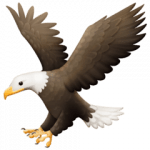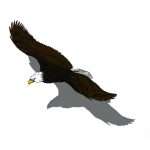By Matie Belle Lakish.
Climate is a huge factor when considering the growing of fruit, especially the tree fruits. Although the San Luis Valley (SLV) is not known for its orchards, like the Delta and Hotchkiss area, it is feasible to grow many types of fruit trees in the Crestone area. However, our altitude, at 8,000 feet, presents a challenge, as the low winter and nighttime temperatures can seriously affect what types of fruits one can grow, and also the varieties that will succeed. Two of the major challenges to consider when deciding what trees to plant: can the tree survive our cold winters and will the tree delay blooming until the frosts are over.
Crestone has a mini-climate that allows fruit trees to succeed better than in some other areas of the Valley. Being on an eastern slope is part of that advantage. The slope is important because it allows the cold air to sink down into the center of the Valley, rather than stay up here with the trees. The eastern part means that the sun doesn’t warm our area as rapidly as it would a south or western slope, and that keeps fruit trees from blooming as early in the spring as they would in other locations.
Late blooming is important because at our altitude we have a very thin atmosphere to hold in heat at night. This means that we usually have many warm days in spring that encourage blossoms, followed by below-freezing nights all the way through May, and sometimes into June. An early-blooming tree will often have its blossoms frozen before spring is really underway. This freezing and thawing can also damage the tree itself, as sensitive fruit trees will send sap into the branches early that will freeze and cause the branches to die off.
Apple trees are most abundant fruit in our area because many varieties will meet those two criteria. There is a wide variety of cold-hardy apples to choose from, and most of them are fairly late blooming. A couple of years ago I looked down at the town from a higher road and was thrilled by the sight of pinkish-white apple blossoms almost covering the landscape. The blooms vary from year to year, but that year was amazing! I am pleased, too, that most of our town trees bear edible fruit, and are not just ornamental crabapples, which are great for pollinating other apples, but not usually great for fresh eating.
When the oldest trees in Crestone were planted, many in the late 1800s, only standard-sized trees were available. Nowadays, one can choose from standard — which sometimes achieve 25 feet in height, semi-dwarf — which are usually around 12 to 15 feet tall, and dwarf — which top out at about six to 10 feet. Dwarf trees start bearing fruit a few years earlier than the others. A newer type, which is especially good for tight spaces, is columnar trees.
When selecting apples, as well as all other fruits, I look for those trees that are hardy to climate zone 3, if possible. There are many apple varieties that meet this criteria, including some of the older trees you’ll see around town such as McIntosh, Haralson, and Gravenstein. However, as our climate warms, I am considering some zone 4 apple trees, of which there are numerous varieties, both classics and newer introductions.
A decade ago, I bought a State Fair and a Honeycrisp, both apples hardy to zone 3. The State Fair is not a storage apple but is great for applesauce and early eating. The Honeycrisp will keep a long time but ripens late. As it turns out, I get more from the State Fair tree, because by the time the Honeycrisp is ripe, the bears are out in full force. Bears, deer, squirrels and almost all other critters love apples. Who can blame them?
Pollination is a consideration with apple trees. If you live close to other apple trees or crabapples, those trees will likely pollinate your trees. However, apples are not self-pollinating, and you will need another apple that blooms at the same time to produce fruit. I bought a red crabapple, a recent introduction called a Firecracker Crabapple, as a pollinator. It makes nice little red apples about an inch in diameter that make beautiful jelly and are my grandson’s favorite for fresh eating. I keep it pruned into a small shape, as crabapple trees are usually quite large and can take over a small orchard.
I also have a columnar apple tree, a Scarlet Sentinel, that I got from Jung Seed and Plants (www.jungseed.com) about four years ago. It bloomed the second year and has produced several apples for the last two years. I like that it fits into a small space, as it grows up but not out. Dwarf trees are good for small yards. They are not quite as hardy as their larger cousins but are easier to prune and to pick.
Speaking of pruning, February is a good time to prune fruit trees. Pruning is another entire topic, but here are the basics.
When planting young trees, cut off any dead branches or dead roots before you plant. Otherwise, leave it until next year. If pruning older trees, first cut off any dead branches. Then look for clusters of branches that are too close together and thin them out. If you want to keep a tree small, select three or four main branches and cut them back to the desired length. Each of these will send out numerous side branches which you will want to thin to two or three each. Most trees bear fruit on last year’s wood, so don’t cut it all off, or you won’t have any harvest.
Colorado State University Extension has some good on-line material on pruning.
Go to www.extension.colostate.edu/topic-areas/yard-garden/training-and-pruning-fruit-trees-7-003/.
Pears are similar to apples in terms of culture. A key difference is that they are not usually as hardy. Only in recent years, with global warming, could one consider planting pears in the SLV, which is why there are few mature trees in the area. There is one on the courthouse lawn and a few others in Saguache, but only young ones in a few gardens in Crestone. If I had more space, I would definitely plant a couple now. Pears, like apples, require a pollinator. I would plant varieties that are listed as hardy to zone 4, or possibly zone 5, if they’re planted in a protected area.
Fruit trees of all types require moderately fertile soil. That means you will probably need to dig a fairly large hole two or three feet in diameter and mix in compost about half and half with the native sandy soil to a depth of two or more feet. I would add some Ironite and some bone meal to the soil, as well. I would not add lime, as our soil is already alkaline, and lime would make it more so. Mix this altogether, then put it back in the hole.
When you’re ready to plant your tree, arrange a hole in the middle large enough to spread the roots out and fill in around them with your soil mix, adding water bit by bit as you fill it in. Put the tree in so that it is planted at the same level in the soil as it was at the nursery. Most trees are grafted, and if you plant it too deeply you may cover up the graft.
You’ll need to water consistently and deeply throughout the season. The easiest way to handle this, long term, is a soaker hose spread out around the tree’s trunk and out to the dripline. This is another topic. For the short run, you can water with a hose or a bucket. You’ll want to water deeply, so the roots don’t dry out, about once or twice a week for the first year or two.
If you live in an area with lots of wind, provide a wind break. A few bales of straw stacked up on the windward side can help a lot.
Next month we’ll talk more about siting your orchard, and we’ll also discuss planting and caring for stone fruits. These include peaches, apricots, plums and cherries. Stay tuned.


